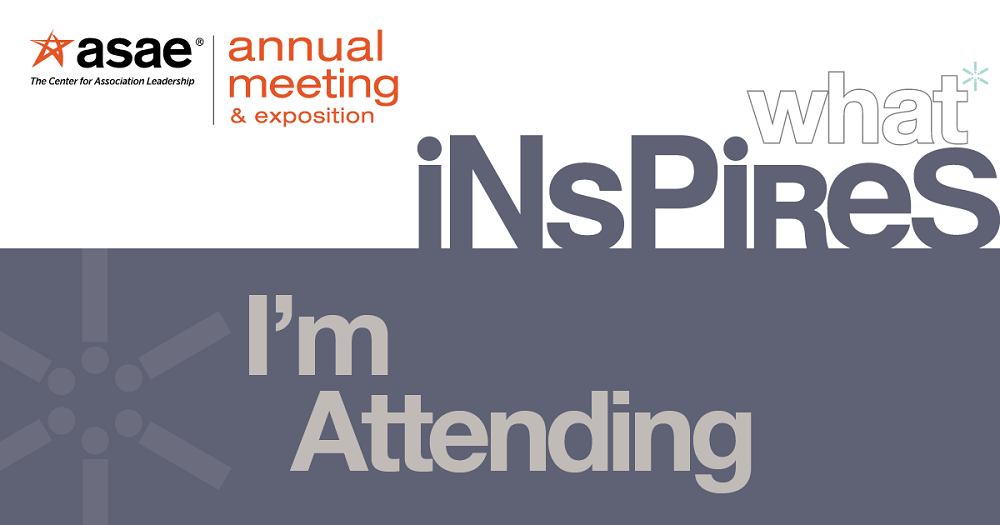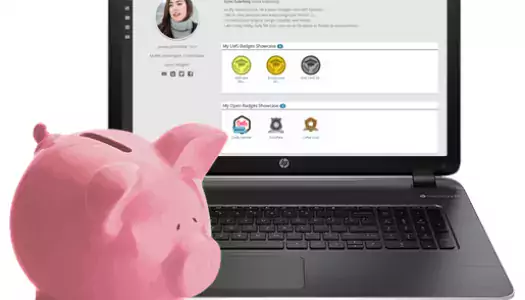Association members encounter an overwhelming amount of information every day from organizations pushing themselves into the already crowded professional development space. No matter how hard you sell your online course or educational program, your prospect’s purchasing decision is most influenced by what others tell them or what they see others do—that’s the power of social proof.
Researchers found that 92 percent of people will trust a recommendation from a peer, and 70 percent will trust a recommendation from someone they don’t even know. Your association can leverage the power of social proof when marketing your online learning programs.
The behavioral science behind social proof
Social proof is the driver behind the growth of influencer marketing campaigns on Instagram and other digital platforms. Influencer marketing on Instagram alone is now a billion dollar industry. It’s also why you see celebrities endorsing products in TV ads or wearing a designer’s clothes at the Oscars. When we see someone like us or someone we like, respect, or trust do something, we’re more apt to do that same thing ourselves.
Behavioral science researchers have repeatedly tested the impact of social proof. Studies have shown we’re more likely to eat in a restaurant with a waiting line, order a dish labeled as one of the most popular items on the menu, and put a tip in a jar already containing money.
The marketing power of social proof is turbo-charged when combined with social identity. We want to do what others in our ‘tribe’ are doing. We also want to do what our tribe expects us to do—we want to be seen as good community citizens.
We're more likely to be influenced if the people we see doing something are like us. The next time you see a car or truck commercial, notice the actor driving the vehicle. It won’t be a celebrity actor—unless it’s a luxury brand—but rather a character actor who most resembles the brand’s target audience.
Your association can increase the power of your educational marketing efforts by leveraging four types of social proof.
#1 - Social Proof from Industry Influencers
Influencer social proof takes advantage of what marketers call the “halo effect.” By associating your product with someone who is respected or admired by your target audience, you raise the perceived value of the product. For example, foodies are willing to spend more for the cookware lines of Food Network celebrity chefs like Mario Batali and Ree Drummond.
How can your association glom onto the social mojo of influencers in your industry when promoting your online courses? First, identify the influencers.
- Who are the thought-leaders writing for industry publications or websites or hosting podcasts or videos?
- Who’s frequently interviewed by traditional or digital media sites?
- Who has a big following on social networks because of the valuable content they share?
- Who consistently attracts a large crowd when speaking at industry events?
Next, figure out how to connect the influencer to one of your educational programs. Which program would they be interested in taking for themselves? Perhaps you can convince them to try it out for free in return for their feedback and testimonial.
If the influencer is not part of the target audience for your program, ask them to review it in an advisory or hiring employer capacity. But, first you need to identify “what’s in it for them.” Their time may be too valuable for the “giving back to the industry” motivation. What can your association offer to them in return? A complimentary conference registration? A conference hotel upgrade? Some other exclusive invitation or experience?
Another way to leverage the power of influencer social proof is to display (with permission) the logos of prestigious companies whose employees have taken your courses. People like to associate with the best.
Seek out influencer experts to participate in your online courses, either as an instructor (if they understand adult learning principles) or guest speaker. When a new instructor joins your program, make a big deal out of it. Announce the news on your digital platforms and in your digital publications. Ask them to be the guest host of an online chat discussing issues and challenges related to the course topic. Let them take over a social media account for a day to preview course content, field questions, and create buzz.
Publish original or repurposed guest posts and articles by these instructors. ASAE features their conference speakers in Associations Now articles. Submit ghostwritten guest posts to and purchase sponsored content (native ads) on other industry websites and blogs.

#2 – Social Proof from Users: Testimonials
Yelp, Amazon, Trip Advisor, and the association community’s ReviewMyAMS are all examples of websites that rose to prominence because of user social proof. According to eMarketer, user reviews are 12 times more trusted than a company’s product description. Testimonials are a great way to leverage this power of social proof.
You first need a method to request and receive testimonials at scale, for example, automatically emailed evaluations. Otherwise, feedback collection may not happen consistently. When the number of students allows you to speak to them individually, you can ask follow-up questions, probe deeper, and get better feedback.
If you normally send out evaluations after a program, use that opportunity to gather testimonials as well as feedback. If you don’t normally request feedback, now’s the time to start.
Ask the right questions and you’ll get what you need for a testimonial. However, don’t use the word ‘testimonial.’ Call it ‘feedback.’ You want to hear an honest appraisal, not what they think you want to hear.
- What challenges were they experiencing that prompted them to enroll in the program?
- What were their expectations upon enrolling?
- Did they have any hesitations or concerns about enrolling?
- How did the program help them meet those challenges?
- How has it specifically improved or changed their business, career, or life?
- Were they pleasantly surprised by any aspect of the program?
- What do they think about those initial hesitations or concerns now?
When you see feedback that has the makings of a good testimonial, turn it into a good story by painting a picture of the problem your student had before taking your program and how the program impacted their life—a “problem-solution-results” structure.
Most importantly, get the student’s permission to share their story. Include their name, position, organization, and a photo alongside their testimonial so prospects can relate personally to them. Because we’re more likely to trust reviews of “people like us,” collect testimonials from the different segments of your target audience.
For new programs, consider doing a pilot first with a small group of beta users who take it for free or at a deep discount in return for their feedback and testimonial.
How can your association use testimonials?
- Add them to your course catalog.
- Use them in email marketing campaigns. Segment your list so the testimonial you use matches the target audience for that email.
- Add them to promotional blurbs in newsletters.
- Use a portion of the testimonial in Facebook and LinkedIn ads.
- Use the student’s story as the basis of a blog post or article that illustrates how they applied a lesson learned.
#3 - Social Proof from the Crowd
Think of social proof from the crowd as the digital equivalent of a velvet rope. If a large group of people appear to be using or endorsing your brand, you must have something good going on. An example from the past is the McDonald’s sign saying, “Over 1 Million Served.” Today, many brands continue to brag about the number of customers served or products sold.
Social proof from the crowd can be seen in the number of your social followers. Or, even better, when those followers display badges affiliated with your brand, like the “I’m attending” social badges displayed by ASAE Annual attendees.
Your association can flaunt the social proof of your crowd by displaying the:
- Number of people registered for a program.
- Number of people who completed a program.
- Number of visitors to your LMS.
- Number of credits earned.
When you reach a user milestone, celebrate it by thanking those who helped you achieve the milestone—another way of showing social proof.
#4 - Social Proof from Friends and Acquaintances
Robert Cialdini, author of Influence: The Psychology of Persuasion, said we're more likely to be influenced in our purchasing decisions by people we like and people like us. That’s why it’s important to have testimonials from all the different segments of your target audience—messages are more persuasive when they’re from people we know or from people who appear to be like us.
When someone displays the ASAE “I’m attending” badge on their Facebook page, friends take notice and think, “Hmm, maybe I should go too.” FOMO—the “fear of missing out” phenomenon—is an especially powerful form of social proof.
Consider digital badges for your programs, or, at the least, include them as events on your Facebook page so people can share their enrollment. Provide a discount code to alumni who refer people to a program they completed.
Marketers always talk about data as one of their association’s most important assets, and it is. But, your members and their relationships is an underappreciated (and underused) asset. Make it easy for your members and your professional community to help you sell your online learning programs by leveraging the power of social proof.








